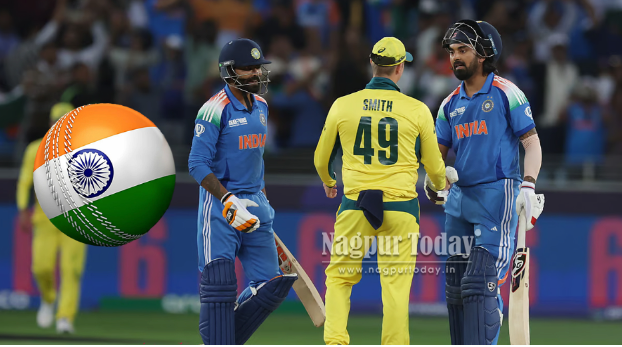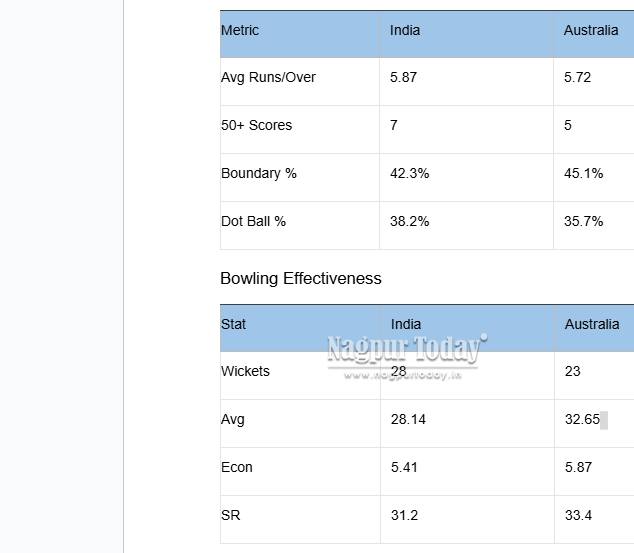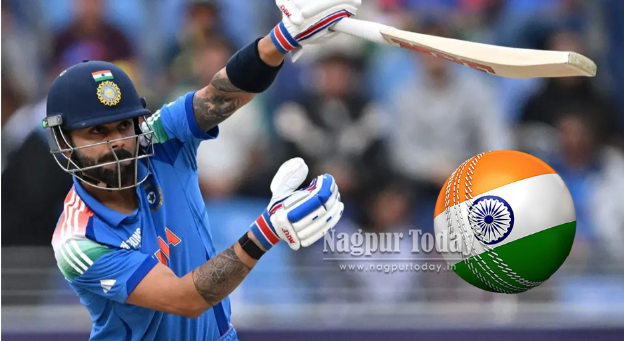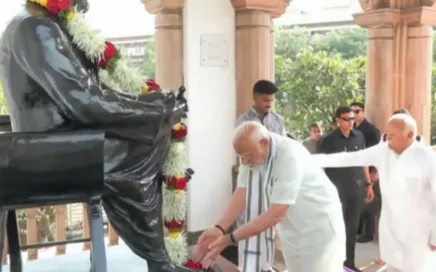Introduction: Setting the Stage for an Epic Rivalry
The 2025 January ODI series that pitted India against Australia (AUS vs IND) was way beyond just another bilateral contest, it was a clash of cricket philosophies, a situation for the players to show they are champions under pressure, and a critical warm-up regime for the T20 World Cup 2025. In this present era, people go for digital platforms for many reasons like joining communities where one can get comments and opinion as well as engaging more deeply with the sport, those who seek to understand the game better also turn to platforms such as Pin Up Casino for a deeper understanding of the game, player performances, and match predictions. You were given the chance to watch it[sic] in three places – the Rajiv Gandhi International Stadium in Hyderabad, the Wankhede in Mumbai, and the Chinnaswamy in Bengaluru, and this series had all the drama, intensity and quality that defines modern ODI cricket.
Before the series, India was still high-spirited due to their 2-1 win in the BAN vs IND series in December 2024, while Australia had just ended their splendid 3-0 whitewash of Pakistan. Both of the teams had almost full-strength squads, understanding the value of momentum heading into major tournaments. The series also was a key yardstick for the other upcoming contests like IND vs PAK, ENG vs IND, and IND vs NZ later in the year.
 Pre-Series Context: Team Preparations and Key Storylines
Pre-Series Context: Team Preparations and Key Storylines
India’s Road to the Series
The Indian team had been undergoing a subtle transformation in their ODI approach. Following the 2023 World Cup semi-finals exit, the team management was agitated to the extent that they were:
- Working on the possibility of injecting more agility in the middle order
- Looking for the right finishers capable of increasing the run rate to 10 per over
- Practicing the rotation policy so as to safeguard the fitness of main bowlers ultra-quick such as Bumrah and Shami
In the IND vs BAN series, bangladesh national cricket team vs india national cricket team match scorecard, the team gained the first hints by witnessing KL Rahul stepping in as a consistent middle-order batter, while Rinku Singh was another bright spot as a finisher. Despite that, the team depth and the ability of the players in dealing with quality fast bowling on true pitches were still under doubt.
Australia’s Preparation and Strategy
It was a true fact that Australia had never failed to make an impression in ICC tournaments before, and by current series, what their aim was:
- Search for the right line-up to fill the place of Aaron Finch whose career in cricket has come to an end
- Get their spinners ready for the subcontinent pitches
- Expand their all-rounder options who could be of help during the World Cup.
However, their win in the recent 3-0 series against Pakistan displayed their depth in batting, which they most clearly lacked at the time of the previous World Cup. But the nature of the pitches in this part of India was a different cup of tea altogether. How Steve Smith and Marnus Labuschagne fared in the middle overs would be a game-changer in the Indians’ stronghold in the form of wrist-spinners.
Match 1: Hyderabad – A Masterclass in Chase Management (India won by 12 runs)
First Innings: India’s Batting Display
The first match of the series at Hyderabad was very intense yet competitive which was a prelude to what was to come in the rest of the series. Rohit Sharma, the Indian skipper, won the toss and decided to bat on a pitch that seemed run-scoring friendly but needed a lot of caution initially.
Key Phases:
- Powerplay Dominance (62/0): Rohit Sharma and Shubman Gill had played very maturely against the new ball pair of Starc and Hazlewood in the earlier overs and then these two batsmen had smashed in the last three overs of the powerplay.
- Middle Overs Control (162/1 in 30 overs): Rohit and Shubman went on to complete their 150-run stand when in the 28th over, Rohit got out for 78, bowled by a well-disguised Zampa.
- Late Innings Surge (318/6): Post Gill’s hard-hitting knock of 94 and his dismissal, KL Rahul stood unbeaten with an incredible 112 runs, his innings being a display of burgeoning capabilities of his to find the much-needed singles and also pierce the gaps flawlessly under duress.
Australia’s Chase: The Smith-Labuschagne Resistance
On a chase of 319, the Australian innings were following such a similarly tense pattern as the Indian innings.
Vital Moments:
- Early Setback (45/2): Bumrah had Warner removed earlier while Siraj had Head dismissed to take out two Australian players early in the game.
- Smith Labuschagne Partnership (158 runs): The duo played it cool, thereby keeping Australia alive in the chase until the 40th over.
- Bumrah’s Death Bowling Masterclass: In his 47th over, Bumrah was unplayable, allowing only 3 runs to be scored and taking two wickets, thus shutting the door on Australia’s chances of a win.
After-Game Analysis:
The encounter indicated improvements in India’s ability not only to figure out competitive marks but also to defend them. During the India national cricket team vs south Australia national cricket team match scorecard, KL Rahul’s century saw him achieve the Player of the Match title, whereas Bumrah, in his final decisive round, gave some convincing signs of returning to his former self.
 Match 2: Mumbai – Maxwell’s Mayhem Levels Series (Australia won by 5 wickets)
Match 2: Mumbai – Maxwell’s Mayhem Levels Series (Australia won by 5 wickets)
Pandya’s Cameo Lifts India to 295
The Wankhede pitch was delightful for a bunch of runs, and the Indian innings saw multiple distinct parts.
Innings Breakdown:
- Top Order Stutter (112/3 in 22 overs): Kohli played an innings of 88 runs at his own pace, but the fall of wickets regularly kept Australia on top.
- Pandya’s Power Hitting (42 off 28):* His late assault, during which he hit three sixes in the last two overs, made India gain a challenging total.
- Cummins’ Impact (3/48): The clever changes of pace by the Australian captain constantly broke India’s momentum in the vital moments of the game and were critical to his side.
Maxwell’s Magnificence Seals the Chase
Australia’s reply will be the highlight of one of the most explosively destructive ODI innings of the recent past:
Game-Changing Moments:
- Early Wobble (76/3): India’s spinners struck early, eliminating the trio Warner, Smith and Head in quick succession.
- Maxwell’s Onslaught (89 off 45): His innings included:
- 6 sixes (three in one over against Kuldeep)
- A strike rate of 197.77
- 28 runs taken off Jadeja’s crucial 8th over
- Finishing Touch: Carey’s calm 38* ensured Australia crossed the line with 7 balls to spare.
Tactical Takeaways:
The fact that Maxwell could use the pre-match advantage of India and beat their spinners totally – which were the strength of the team – by addressing them was the main reason behind the strategy change for the last game.
Match 3: Bengaluru – Bumrah’s Redemption Seals Series (India won by 38 runs)
Pant’s Aggression Sets Up Competitive Total
India batted first at the Chinnaswamy Stadium for the series decider and scored 287/9, a score that initially seemed to be not enough but later turned out to be quite demanding.
Highlights of the innings:
- Pant’s Counterattack (73 off 68): His innings, at 60/3, had the following features:
- 5 sixes, mostly against the spinners
- A crucial 87-run partnership with Jadeja
- Jadeja’s All-Round Contribution (45 & 2/42): His late striking and disciplined bowling were pivotal factors in the win
- Zampa’s Control (2/45): The leg-spinner’s performance displayed a lot of control and skillfulness in taming India’s middle order
Bumrah’s Career-Best Decimates Australia
India defended 288 in their most comprehensive bowling performance:
Match-Defining Spells:
- Bumrah’s Opening Salvo (2/15 in first 5 overs): Took out Warner and Smith early
- Middle Overs Squeeze (Kuldeep-Jadeja combine for 4/89 in 20 overs): The spinners put unrelenting pressure
- Bumrah’s Death Overs (5/42): His yorker to dismiss Maxwell (89) was arguably the ball of the series
Series-Clinching Moments:
- Australia’s collapse from 180/4 to 249 all out
- Siraj’s crucial breakthroughs in the middle overs
- Jadeja’s direct hit to run out Cummins
Statistical Deep Dive: What the Numbers Reveal
Batting Metrics Comparison
 Looking Ahead: Implications for Future Series
Looking Ahead: Implications for Future Series
For India
- T20 World Cup Preparation:
- Need to identify finishers
- Manage Bumrah’s workload carefully
- Test Series vs England:
- Ashwin-Jadeja combination remains key
- Openers need to convert starts
- BAN vs IND & IND vs ZIM (Future Tours)
- Bangladesh’s spin-heavy attack could trouble India if pitches are slow.
- Zimbabwe will look at Australia’s aggressive batting as inspiration.
For Australia
- Middle Order Concerns:
- Need consistent performers at 5-6
- Maxwell’s fitness crucial
- Pace Bowling Depth:
- Managing Starc-Hazlewood-Cummins trio
- Developing backup options
 Final Verdict: What This Series Taught Us
Final Verdict: What This Series Taught Us
The ODI series between AUS and IND in January 2025 will be always in our minds as:
- A demonstration of the best ODI cricket that the players have produced
- The re-emergence of Bumrah as the greatest pace-bowling talent in the world
- Evidence that 50-over cricket is still full of excitement
- A significant building block in the World Cup efforts of both teams
The series has not only met the fan’s expectations for the 2025 cricket calendar in terms of intensity and quality, but it has been their heartbeat and indicator of the same for the rest of the year, as we move into the T20 World Cup and the forthcoming matches of IND vs PAK and ENG vs IND.

 Pre-Series Context: Team Preparations and Key Storylines
Pre-Series Context: Team Preparations and Key Storylines
 Match 2: Mumbai – Maxwell’s Mayhem Levels Series (Australia won by 5 wickets)
Match 2: Mumbai – Maxwell’s Mayhem Levels Series (Australia won by 5 wickets) Looking Ahead: Implications for Future Series
Looking Ahead: Implications for Future Series Final Verdict: What This Series Taught Us
Final Verdict: What This Series Taught Us











